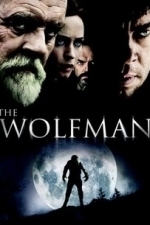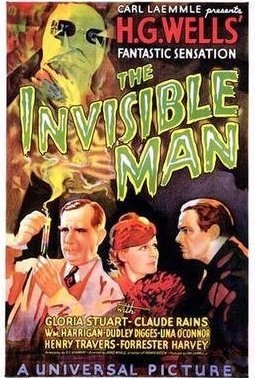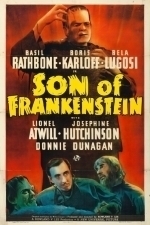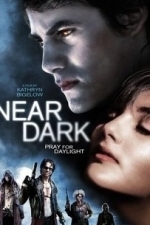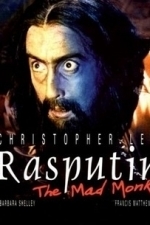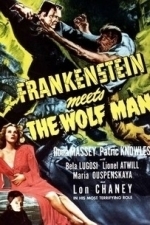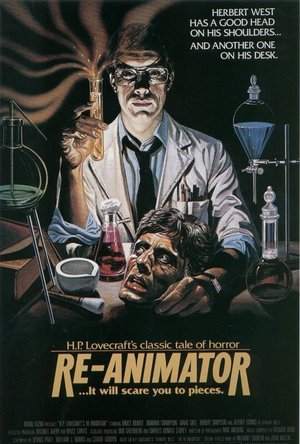Search
JT (287 KP) rated The Wolfman (2010) in Movies
Mar 10, 2020
As what we would describe as the classic monster horror, this remake of the 1941 black and white picture in some way does itself and the original some justice.
Back then horror was starting to carve itself out to a market of film goers who really didn’t have much of an idea as to how film could and would change their lives. The likes of Dracula and Frankenstein had also achieved great historic status.
The plot of the story stays true, man is bitten, man becomes werewolf, all hell breaks loose and it is the efforts of a love interest that tries in vein to break the curse. Something which not even the gypsies could achieve.
Special effects wise its impressive, Del Toro went through make up hell in order to gain the look, some three hours to apply and one to remove so his dedication must be applauded. As to whether he was the right choice for the part is another question, in some parts, in human form he loodke out of place with his foreign slightly merged American accent.
The original film ultimately was basic, a drama that based itself around a werewolf, there was no gore and hardly any blood. So of course it was only fitting that this film should contain both, and vast quantities of flying limbs and spouting red stuff. Did it need it? It surely must have only been there too satisfy an age where any lack of these effects would seem a disappointment.
The supporting cast ranging from Anthony Hopkins as Sir John Talbot, Hugo Weaving as Inspector Abberline and the beautiful Emily Blunt as Gwen all do a wonderful job adding their talents to the narrative. Hopkins especially was his usual dark, sinister and composed self.
There are some truly scary scenes, and some fantastic shots of a Gothic London but the film tends to drift off in places. Overall its a worthwhile watch but doesn’t do enough to really make it one of standouts of 2010.
Back then horror was starting to carve itself out to a market of film goers who really didn’t have much of an idea as to how film could and would change their lives. The likes of Dracula and Frankenstein had also achieved great historic status.
The plot of the story stays true, man is bitten, man becomes werewolf, all hell breaks loose and it is the efforts of a love interest that tries in vein to break the curse. Something which not even the gypsies could achieve.
Special effects wise its impressive, Del Toro went through make up hell in order to gain the look, some three hours to apply and one to remove so his dedication must be applauded. As to whether he was the right choice for the part is another question, in some parts, in human form he loodke out of place with his foreign slightly merged American accent.
The original film ultimately was basic, a drama that based itself around a werewolf, there was no gore and hardly any blood. So of course it was only fitting that this film should contain both, and vast quantities of flying limbs and spouting red stuff. Did it need it? It surely must have only been there too satisfy an age where any lack of these effects would seem a disappointment.
The supporting cast ranging from Anthony Hopkins as Sir John Talbot, Hugo Weaving as Inspector Abberline and the beautiful Emily Blunt as Gwen all do a wonderful job adding their talents to the narrative. Hopkins especially was his usual dark, sinister and composed self.
There are some truly scary scenes, and some fantastic shots of a Gothic London but the film tends to drift off in places. Overall its a worthwhile watch but doesn’t do enough to really make it one of standouts of 2010.
Matthew Krueger (10051 KP) rated The Invisible Man (1933) in Movies
Mar 4, 2020
Universal Monster
This movie is such a classic, it came out after dracula, frankenstein and the mummy. Out of all the universal monster movies, i like this one the most. It combines sci-fi, horror, psychological espects, and overall the invisible man just being a dick/asshole to everybody in his pathway. This classic movie is based off of a H.G. Wells novel, and if you dont know who that is, look him up..."The War of the Worlds".
The plot: While researching a new drug, Dr. Jack Griffin (Claude Rains) stumbles on a potion that can make him invisible. When he reveals his new ability to his old mentor (Henry Travers) and his fiancée (Gloria Stuart), it's clear that a side effect of the potion is insanity. Jack goes on a violent rampage, and the police struggle to hunt him down, unable to see their target, while his mentor and his former partner (William Harrigan) desperately try to devise a plan to capture him.
You have Claude Rains playing "The Invisible Man", he is excellent in this film. Cause like i said his charcter is just a dick/asshole to everybody in his pathway but has a heart of gold for his love.
If you havent seen this film, i would highly recordmend it, cause it is fantasic and phenomenal.
The plot: While researching a new drug, Dr. Jack Griffin (Claude Rains) stumbles on a potion that can make him invisible. When he reveals his new ability to his old mentor (Henry Travers) and his fiancée (Gloria Stuart), it's clear that a side effect of the potion is insanity. Jack goes on a violent rampage, and the police struggle to hunt him down, unable to see their target, while his mentor and his former partner (William Harrigan) desperately try to devise a plan to capture him.
You have Claude Rains playing "The Invisible Man", he is excellent in this film. Cause like i said his charcter is just a dick/asshole to everybody in his pathway but has a heart of gold for his love.
If you havent seen this film, i would highly recordmend it, cause it is fantasic and phenomenal.
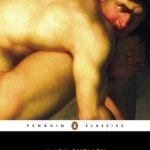
Frankenstein: Or, the Modern Prometheus
Mary Shelley and Maurice Hindle
Book
A terrifying vision of scientific progress without moral limits, Mary Shelley's Frankenstein leads...
Matthew Krueger (10051 KP) rated Son of Frankenstein (1939) in Movies
Oct 9, 2020
Boris Karloff (3 more)
Bela Lugosi
Basil Rathbone
Lionel Atwill
The Monster's Alive Once More
Son of Frankenstein- is a great continuation of the frankenstein franchise. Boris Karloff os back as the monster but this would be the last time he would play the monster in the universal monster universe. Its sad cause when you think of frankenstein, you think of Boris.
The plot: Baron Wolf von Frankenstein (Basil Rathbone) is determined to prove the legitimacy of his father's scientific work, thus rescuing the family name from disgrace. With the help of Ygor (Bela Lugosi), a grave robber, Wolf successfully reanimates the monster (Boris Karloff) his father originally brought back from the dead. But when several villagers are killed mysteriously, Wolf must find the culprit in order to vindicate his creation, or face the possibility that he may be responsible.
Universal's declining horror output was revitalized with the enormously successful Son of Frankenstein, in which the studio cast both stars.
After the ousting of the Laemmles from Universal and the British embargo on American horror films in 1936, Karloff and Lugosi found themselves in a career slump. For two years, horror films were out of favor at Universal Studios. On April 5, 1938, a nearly bankrupt theater in Los Angeles staged a desperate stunt by showing Frankenstein, Dracula and King Kong as a triple feature. The impressive box office results led to similarly successful revivals nationwide. Universal soon decided to make a big-budget Frankenstein sequel.
Son of Frankenstein marks changes in the Monster's character from Bride of Frankenstein. The Monster is duller and no longer speaks, explained by being injured by a lightning strike. The monster also wore a giant fur vest, not seen in the first two Frankenstein films, perhaps to add color to his appearance when the film was planned to be shot in color. He is fond of Ygor and obeys his orders. The Monster shows humanity in three scenes: first when he is disturbed by his image in a mirror, especially when compared to the Baron. Next, when he discovers Ygor's body, letting out a powerful scream, and later when he contemplates killing Peter but changes his mind. While the first two films were clearly set in the 1900s, this film appears to take place in the 1930s, judging by the appearance of a modern automobile.
Peter Lorre was originally cast as Baron Wolf von Frankenstein, but he had to leave the production when he became ill. Replacing Lorre was Basil Rathbone, who had scored a major triumph as Sir Guy of Gisbourne in The Adventures of Robin Hood, released the previous year.
According to the documentary Universal Horror (1998), the film was intended to be shot in color and some Technicolor test footage was filmed, but for artistic or budgetary reasons the plan was abandoned. No color test footage is known to survive, but a clip from a Kodachrome color home movie filmed at the studio and showing Boris Karloff in the green monster makeup, clowning around with makeup artist Jack Pierce, is included in the same documentary.
Its a excellent universal monster film.
The plot: Baron Wolf von Frankenstein (Basil Rathbone) is determined to prove the legitimacy of his father's scientific work, thus rescuing the family name from disgrace. With the help of Ygor (Bela Lugosi), a grave robber, Wolf successfully reanimates the monster (Boris Karloff) his father originally brought back from the dead. But when several villagers are killed mysteriously, Wolf must find the culprit in order to vindicate his creation, or face the possibility that he may be responsible.
Universal's declining horror output was revitalized with the enormously successful Son of Frankenstein, in which the studio cast both stars.
After the ousting of the Laemmles from Universal and the British embargo on American horror films in 1936, Karloff and Lugosi found themselves in a career slump. For two years, horror films were out of favor at Universal Studios. On April 5, 1938, a nearly bankrupt theater in Los Angeles staged a desperate stunt by showing Frankenstein, Dracula and King Kong as a triple feature. The impressive box office results led to similarly successful revivals nationwide. Universal soon decided to make a big-budget Frankenstein sequel.
Son of Frankenstein marks changes in the Monster's character from Bride of Frankenstein. The Monster is duller and no longer speaks, explained by being injured by a lightning strike. The monster also wore a giant fur vest, not seen in the first two Frankenstein films, perhaps to add color to his appearance when the film was planned to be shot in color. He is fond of Ygor and obeys his orders. The Monster shows humanity in three scenes: first when he is disturbed by his image in a mirror, especially when compared to the Baron. Next, when he discovers Ygor's body, letting out a powerful scream, and later when he contemplates killing Peter but changes his mind. While the first two films were clearly set in the 1900s, this film appears to take place in the 1930s, judging by the appearance of a modern automobile.
Peter Lorre was originally cast as Baron Wolf von Frankenstein, but he had to leave the production when he became ill. Replacing Lorre was Basil Rathbone, who had scored a major triumph as Sir Guy of Gisbourne in The Adventures of Robin Hood, released the previous year.
According to the documentary Universal Horror (1998), the film was intended to be shot in color and some Technicolor test footage was filmed, but for artistic or budgetary reasons the plan was abandoned. No color test footage is known to survive, but a clip from a Kodachrome color home movie filmed at the studio and showing Boris Karloff in the green monster makeup, clowning around with makeup artist Jack Pierce, is included in the same documentary.
Its a excellent universal monster film.
Matthew Krueger (10051 KP) rated Near Dark (1987) in Movies
Nov 3, 2020
Bill Paxton (1 more)
Lance Henrikson
Finger-Lickin' Good!
Near Dark- is a great neo-western horror film about vampires. It was directed by Kathryn Bigelow, it was also her debut film.
The plot: Cowboy Caleb Colton (Adrian Pasdar) meets gorgeous Mae (Jenny Wright) at a bar, and the two have an immediate attraction. But when Mae turns out to be a vampire and bites Caleb on the neck, their relationship gets complicated. Wracked with a craving for human blood, Caleb is forced to leave his family and ride with Mae and her gang of vampires, including the evil Severen. Along the way Caleb must decide between his new love of Mae and the love of his family.
Vampire films had become "trendy" by the time of Near Dark's production, with the success of Fright Night (1985) and The Lost Boys (1987), the latter released two months before Near Dark and grossing $32 million. Kathryn Bigelow wanted to film a Western movie that departed from cinematic convention.
The combination of the genres had been visited at least twice before on the big screen, with Curse of the Undead (1959) and Billy the Kid Versus Dracula (1966).
Bigelow knew (and later married) director James Cameron, who directed Aliens (1986), a film that shares three cast members (Paxton, Goldstein and Henriksen) with Near Dark. Actor Michael Biehn was offered the role of Jesse Hooker, but he rejected the role because he found the script confusing. Lance Henriksen took over the role. A cinema seen in the background early in the film has Aliens on its marquee and Cameron played the man who "flips off" Severen.
Its a classic and a cult film.
The plot: Cowboy Caleb Colton (Adrian Pasdar) meets gorgeous Mae (Jenny Wright) at a bar, and the two have an immediate attraction. But when Mae turns out to be a vampire and bites Caleb on the neck, their relationship gets complicated. Wracked with a craving for human blood, Caleb is forced to leave his family and ride with Mae and her gang of vampires, including the evil Severen. Along the way Caleb must decide between his new love of Mae and the love of his family.
Vampire films had become "trendy" by the time of Near Dark's production, with the success of Fright Night (1985) and The Lost Boys (1987), the latter released two months before Near Dark and grossing $32 million. Kathryn Bigelow wanted to film a Western movie that departed from cinematic convention.
The combination of the genres had been visited at least twice before on the big screen, with Curse of the Undead (1959) and Billy the Kid Versus Dracula (1966).
Bigelow knew (and later married) director James Cameron, who directed Aliens (1986), a film that shares three cast members (Paxton, Goldstein and Henriksen) with Near Dark. Actor Michael Biehn was offered the role of Jesse Hooker, but he rejected the role because he found the script confusing. Lance Henriksen took over the role. A cinema seen in the background early in the film has Aliens on its marquee and Cameron played the man who "flips off" Severen.
Its a classic and a cult film.
Matthew Krueger (10051 KP) rated Rasputin, the Mad Monk (1966) in Movies
Nov 10, 2020
Mad Monk
Rasputin, The Mad Monk- is a entertaining horror film.
The story is largely fictionalized, although some of the events leading up to Rasputin's assassination are very loosely based on Prince Yusupov's account of the story. For legal reasons (Yusupov was still alive when the film was released), the character of Yusupov was replaced by Ivan (Matthews).
Christopher Lee play as Grigori Rasputin, the Russian peasant-mystic who gained great influence with the Tsars prior to the Russian Revolution.
The emphasis is on Rasputin's terrifying powers both to work magic and to seduce women.
Rasputin the Mad Monk was filmed back-to-back in 1965 with Dracula: Prince of Darkness, using the same sets at Hammer's Bray Studios. Lee, Matthews, Shelley and Farmer appeared in both films. In some markets, it was released on a double feature with The Reptile.
It was the third collaboration between Christopher Lee and Don Sharp, following The Devil Ship Pirates and The Face of Fu Manchu.
Lee later said, "The only way you can present him is the way he was historically described. He was a lecher and a drunk, and definitely had healing powers. So he was a saint and a sinner... There were very few good sides to him. Rasputin is one of the best things I’ve done. "
"I think it's the best thing Chris Lee's ever done," said Sharp in 1992. "Rasputin was supposed to have had this ability to hypnotise people.
The original ending had the lifeless Rasputin lying on the ice with his hands held up to his forehead in benediction. However, it was considered controversial for religious reasons, and was removed. Stills of the original ending still exist.
Sharp says the final fight scene between Francis Matthews and Christopher Lee was greatly cut by Tony Keys when Sharp had to leave the film during editing. Sharp had greatly enjoyed the experience of making his first two Hammer films - Kiss of the Vampire and Devil Ship Pirates - but not Rasputin.
As a child in the 1920s, Lee had actually met Rasputin's killer, Felix Yusupov. In later life Lee met Rasputin's daughter Maria.
Its a good horror film.
The story is largely fictionalized, although some of the events leading up to Rasputin's assassination are very loosely based on Prince Yusupov's account of the story. For legal reasons (Yusupov was still alive when the film was released), the character of Yusupov was replaced by Ivan (Matthews).
Christopher Lee play as Grigori Rasputin, the Russian peasant-mystic who gained great influence with the Tsars prior to the Russian Revolution.
The emphasis is on Rasputin's terrifying powers both to work magic and to seduce women.
Rasputin the Mad Monk was filmed back-to-back in 1965 with Dracula: Prince of Darkness, using the same sets at Hammer's Bray Studios. Lee, Matthews, Shelley and Farmer appeared in both films. In some markets, it was released on a double feature with The Reptile.
It was the third collaboration between Christopher Lee and Don Sharp, following The Devil Ship Pirates and The Face of Fu Manchu.
Lee later said, "The only way you can present him is the way he was historically described. He was a lecher and a drunk, and definitely had healing powers. So he was a saint and a sinner... There were very few good sides to him. Rasputin is one of the best things I’ve done. "
"I think it's the best thing Chris Lee's ever done," said Sharp in 1992. "Rasputin was supposed to have had this ability to hypnotise people.
The original ending had the lifeless Rasputin lying on the ice with his hands held up to his forehead in benediction. However, it was considered controversial for religious reasons, and was removed. Stills of the original ending still exist.
Sharp says the final fight scene between Francis Matthews and Christopher Lee was greatly cut by Tony Keys when Sharp had to leave the film during editing. Sharp had greatly enjoyed the experience of making his first two Hammer films - Kiss of the Vampire and Devil Ship Pirates - but not Rasputin.
As a child in the 1920s, Lee had actually met Rasputin's killer, Felix Yusupov. In later life Lee met Rasputin's daughter Maria.
Its a good horror film.
LT
Let the Right One in
Book
Audiences can't get enough of fang fiction. Twilight, True Blood, Being Human, The Vampire Diaries,...
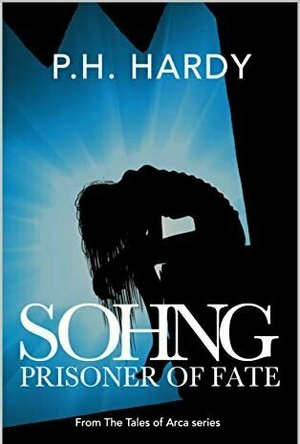
Sohng: Prisoner of Fate (Tales of Arca #1)
Book
n a world of hidden secrets, all will be revealed in this Dark, Science Fiction, Fantasy Adventure....
Matthew Krueger (10051 KP) rated Frankenstein Meets the Wolf Man (1943) in Movies
Oct 15, 2020
Lon Chaney Jr. (1 more)
Bela Lugosi
Huge Disappointment
Contains spoilers, click to show
Frankenstien Meets The Wolf Man- was a huge disappointment but ill get to that later. First lets talk about the film.
The plot: Lawrence Stewart Talbot (Lon Chaney Jr.) is plagued by a physical oddity that turns him into a crazed werewolf after sundown. His desire to rid himself of this ailment leads him to the castle owned by mad scientist Dr. Frankenstein. Frankenstein, it turns out, is now dead, yet Talbot believes that the scientist's daughter, Baroness Elsa Frankenstein (Ilona Massey), can help him. However, his quest to right himself puts him on a collision course with Frankenstein's monster (Bela Lugosi).
This was the first of a series of "ensemble" monster films combining characters from several film series. This film, therefore, is both the fifth in the series of films based upon Mary Shelley's 1818 book Frankenstein; or, The Modern Prometheus, directly after The Ghost of Frankenstein, and a sequel to The Wolf Man.
As ultimately edited and released, Frankenstein Meets the Wolf Man is told in two almost equal parts. The opening scenes tell the story of Talbot's resurrection, killing spree, hospitalization, and escape across Europe. Much time is spent with a secondary policeman, Inspector Owen, and on scenes with a desperate Talbot hospitalized by Dr. Mannering. The discovery of the Monster and pursuit of Dr. Frankenstein's scientific notes do not begin until thirty-five minutes into the film. The second half introduces the Monster, Elsa, and the village of Vasaria and its inhabitants.
Immediately following his success in Dracula, Bela Lugosi had been the first choice to play the Monster in Universal's original Frankenstein film, but Lugosi famously turned down the nonspeaking, heavily made-up role: as conceived by the original director Robert Florey, the Monster was nothing more than a mindless killing machine and not suitable for Lugosi's rising stardom and career as a leading actor, and the original make-up for Lugosi's screen test was closely based on the doll-like clay robot in The Golem.
Eight years later, Lugosi joined the film as the Monster's twisted companion Ygor in Son of Frankenstein. He returned to the role in the sequel, The Ghost of Frankenstein, in which Ygor's brain is implanted into the Monster (now Chaney), causing the creature to take on Lugosi/Ygor's voice. After plans for Chaney to play both the Monster and the Wolf Man in the next film fell through for logistical reasons (Chaney demurred), the natural next step was for Lugosi, who turned 60 during the film's production, to take on the part that he once was slated to originate.
The original script — and indeed the film as originally filmed — had the Monster performing dialogue throughout the film, including references to the events of Ghost and indicating that the Monster is now blind (a side effect of the brain transplant as revealed at the end of the previous film, and the reason for his iconic stiff-armed "Frankenstein walk"). According to Siodmak, a studio screening audience reacted negatively to this, finding the idea of the Monster speaking with a Hungarian accent unintentionally funny (although the Monster spoke with Lugosi's voice at the end of Ghost, the audiences had been carefully prepared for it by the plot of the film). This has been generally accepted as the reason virtually all scenes in which Lugosi speaks were deleted (though two brief scenes remain in the film that show Lugosi's mouth moving without sound). All references to his being blind were also eliminated, rendering the Monster's groping gestures unmotivated for those unfamiliar with the ending of the previous film. Close-ups of Lugosi's eyes during the revitalization scene and his evil, knowing leer to Patric Knowles were supposed to indicate that his vision had been restored, but in the ultimate context of the film this means nothing. Consequently, Lugosi is onscreen literally for only a few minutes, leaving the Wolf Man as the film's primary focus.
Lugosi suffered exhaustion at some point during the filming, and his absence from the set, combined with his physical limitations at age 60, required the liberal use of stand-ins.
This would be the final Universal horror film in which the Monster played a major role; in the subsequent films The House of Frankenstein and House of Dracula, the Monster, played by Glenn Strange, is brought back to life only in the final scenes (in the 1948 Universal comedy Abbott and Costello Meet Frankenstein (the second and final film in which Lugosi plays Dracula), Strange has a larger role and the creature once again speaks, albeit with very limited dialogue, twice muttering, "Yes, Master."). It was also the last Universal horror film to feature an actual member of the Frankenstein family as a character.
A tribute to this meeting of two horror film legends happens near the beginning of the film Alien vs. Predator, when this film is seen playing on a television at the satellite receiving station. In the US version of the 1962 film King Kong vs. Godzilla (another pairing of prominent monsters), the music from the fight scene at the end of the film also plays during the final fight between Godzilla and Kong.
So the reason why this movie was a huge disappointments that it was universal first ensemble. A meet between two iconic monsters and boy did it disappointment. Their didnt meet until the last 5 minutes, no scratch that the last minute. Yes you read that right, the last minute their meet. Huge disappointment. It was also slow. I dont recordmend watching this one and skip it. The only reason im giving it a 5 is because of Lon Chaney Jr. and Bela Lugosi.
The plot: Lawrence Stewart Talbot (Lon Chaney Jr.) is plagued by a physical oddity that turns him into a crazed werewolf after sundown. His desire to rid himself of this ailment leads him to the castle owned by mad scientist Dr. Frankenstein. Frankenstein, it turns out, is now dead, yet Talbot believes that the scientist's daughter, Baroness Elsa Frankenstein (Ilona Massey), can help him. However, his quest to right himself puts him on a collision course with Frankenstein's monster (Bela Lugosi).
This was the first of a series of "ensemble" monster films combining characters from several film series. This film, therefore, is both the fifth in the series of films based upon Mary Shelley's 1818 book Frankenstein; or, The Modern Prometheus, directly after The Ghost of Frankenstein, and a sequel to The Wolf Man.
As ultimately edited and released, Frankenstein Meets the Wolf Man is told in two almost equal parts. The opening scenes tell the story of Talbot's resurrection, killing spree, hospitalization, and escape across Europe. Much time is spent with a secondary policeman, Inspector Owen, and on scenes with a desperate Talbot hospitalized by Dr. Mannering. The discovery of the Monster and pursuit of Dr. Frankenstein's scientific notes do not begin until thirty-five minutes into the film. The second half introduces the Monster, Elsa, and the village of Vasaria and its inhabitants.
Immediately following his success in Dracula, Bela Lugosi had been the first choice to play the Monster in Universal's original Frankenstein film, but Lugosi famously turned down the nonspeaking, heavily made-up role: as conceived by the original director Robert Florey, the Monster was nothing more than a mindless killing machine and not suitable for Lugosi's rising stardom and career as a leading actor, and the original make-up for Lugosi's screen test was closely based on the doll-like clay robot in The Golem.
Eight years later, Lugosi joined the film as the Monster's twisted companion Ygor in Son of Frankenstein. He returned to the role in the sequel, The Ghost of Frankenstein, in which Ygor's brain is implanted into the Monster (now Chaney), causing the creature to take on Lugosi/Ygor's voice. After plans for Chaney to play both the Monster and the Wolf Man in the next film fell through for logistical reasons (Chaney demurred), the natural next step was for Lugosi, who turned 60 during the film's production, to take on the part that he once was slated to originate.
The original script — and indeed the film as originally filmed — had the Monster performing dialogue throughout the film, including references to the events of Ghost and indicating that the Monster is now blind (a side effect of the brain transplant as revealed at the end of the previous film, and the reason for his iconic stiff-armed "Frankenstein walk"). According to Siodmak, a studio screening audience reacted negatively to this, finding the idea of the Monster speaking with a Hungarian accent unintentionally funny (although the Monster spoke with Lugosi's voice at the end of Ghost, the audiences had been carefully prepared for it by the plot of the film). This has been generally accepted as the reason virtually all scenes in which Lugosi speaks were deleted (though two brief scenes remain in the film that show Lugosi's mouth moving without sound). All references to his being blind were also eliminated, rendering the Monster's groping gestures unmotivated for those unfamiliar with the ending of the previous film. Close-ups of Lugosi's eyes during the revitalization scene and his evil, knowing leer to Patric Knowles were supposed to indicate that his vision had been restored, but in the ultimate context of the film this means nothing. Consequently, Lugosi is onscreen literally for only a few minutes, leaving the Wolf Man as the film's primary focus.
Lugosi suffered exhaustion at some point during the filming, and his absence from the set, combined with his physical limitations at age 60, required the liberal use of stand-ins.
This would be the final Universal horror film in which the Monster played a major role; in the subsequent films The House of Frankenstein and House of Dracula, the Monster, played by Glenn Strange, is brought back to life only in the final scenes (in the 1948 Universal comedy Abbott and Costello Meet Frankenstein (the second and final film in which Lugosi plays Dracula), Strange has a larger role and the creature once again speaks, albeit with very limited dialogue, twice muttering, "Yes, Master."). It was also the last Universal horror film to feature an actual member of the Frankenstein family as a character.
A tribute to this meeting of two horror film legends happens near the beginning of the film Alien vs. Predator, when this film is seen playing on a television at the satellite receiving station. In the US version of the 1962 film King Kong vs. Godzilla (another pairing of prominent monsters), the music from the fight scene at the end of the film also plays during the final fight between Godzilla and Kong.
So the reason why this movie was a huge disappointments that it was universal first ensemble. A meet between two iconic monsters and boy did it disappointment. Their didnt meet until the last 5 minutes, no scratch that the last minute. Yes you read that right, the last minute their meet. Huge disappointment. It was also slow. I dont recordmend watching this one and skip it. The only reason im giving it a 5 is because of Lon Chaney Jr. and Bela Lugosi.
Matthew Krueger (10051 KP) rated Re-Animator (1985) in Movies
Oct 30, 2020
Jeffrey Combs (2 more)
Bruce Abbott
Stuart Gordan
Mad Man
Re-Animator- is frankenstien. But alot more gorer. So much gory, so much viloence, so much horror. Its different than frankenstein, but has a lot in common.
The plot: Loosely based on H P Lovecraft's classic horror tale, Herbert West is a young scientist who has a good head on his shoulders and another on the lab table in front of him.
Originally devised by Gordon as a theatrical stage production and later a half-hour television pilot, the television script was revised to become a feature film.
The film originally received an X rating, and was later edited to obtain an R rating for video rental stores.
The idea to make Re-Animator came from a discussion Stuart Gordon had with friends one night about vampire films. He felt that there were too many Dracula films and expressed a desire to see a Frankenstein film. Someone asked if he had read "Herbert West–Reanimator" by H. P. Lovecraft.
Originally, Gordon was going to adapt Lovecraft's story for the stage, but eventually decided along with writers Dennis Paoli and William Norris to make it as a half-hour television pilot. The story was set around the turn of the century, and they soon realized that it would be too expensive to recreate. They updated it to the present day in Chicago with the intention of using actors from the Organic Theater company. They were told that the half hour format was not salable and so they made it an hour, writing 13 episodes. Special effects technician Bob Greenberg, who had worked on John Carpenter's Dark Star, repeatedly told Gordon that the only market for horror was in feature films, and introduced him to producer Brian Yuzna. Gordon showed Yuzna the script for the pilot and the 12 additional episodes.
Yuzna described the film as having the "sort of shock sensibility of an Evil Dead with the production values of, hopefully, The Howling."
Naulin said that Re-Animator was the bloodiest film he had ever worked on. In the past, he had never used more than two gallons of blood on a film; on Re-Animator, he used 24 gallons.
The biggest makeup challenge in the film was the headless Dr. Hill zombie. Tony Doublin designed the mechanical effects and was faced with the problem of proportion once the 9–10 inches of the head were removed from the body. Each scene forced him to use a different technique. For example, one technique involved building an upper torso that actor David Gale could bend over and stick his head through so that it appeared to be the one that the walking corpse was carrying around.
Its excellent gory film
The plot: Loosely based on H P Lovecraft's classic horror tale, Herbert West is a young scientist who has a good head on his shoulders and another on the lab table in front of him.
Originally devised by Gordon as a theatrical stage production and later a half-hour television pilot, the television script was revised to become a feature film.
The film originally received an X rating, and was later edited to obtain an R rating for video rental stores.
The idea to make Re-Animator came from a discussion Stuart Gordon had with friends one night about vampire films. He felt that there were too many Dracula films and expressed a desire to see a Frankenstein film. Someone asked if he had read "Herbert West–Reanimator" by H. P. Lovecraft.
Originally, Gordon was going to adapt Lovecraft's story for the stage, but eventually decided along with writers Dennis Paoli and William Norris to make it as a half-hour television pilot. The story was set around the turn of the century, and they soon realized that it would be too expensive to recreate. They updated it to the present day in Chicago with the intention of using actors from the Organic Theater company. They were told that the half hour format was not salable and so they made it an hour, writing 13 episodes. Special effects technician Bob Greenberg, who had worked on John Carpenter's Dark Star, repeatedly told Gordon that the only market for horror was in feature films, and introduced him to producer Brian Yuzna. Gordon showed Yuzna the script for the pilot and the 12 additional episodes.
Yuzna described the film as having the "sort of shock sensibility of an Evil Dead with the production values of, hopefully, The Howling."
Naulin said that Re-Animator was the bloodiest film he had ever worked on. In the past, he had never used more than two gallons of blood on a film; on Re-Animator, he used 24 gallons.
The biggest makeup challenge in the film was the headless Dr. Hill zombie. Tony Doublin designed the mechanical effects and was faced with the problem of proportion once the 9–10 inches of the head were removed from the body. Each scene forced him to use a different technique. For example, one technique involved building an upper torso that actor David Gale could bend over and stick his head through so that it appeared to be the one that the walking corpse was carrying around.
Its excellent gory film
